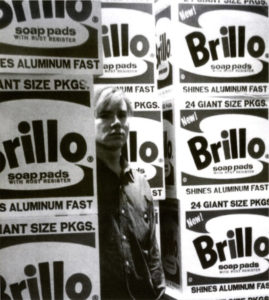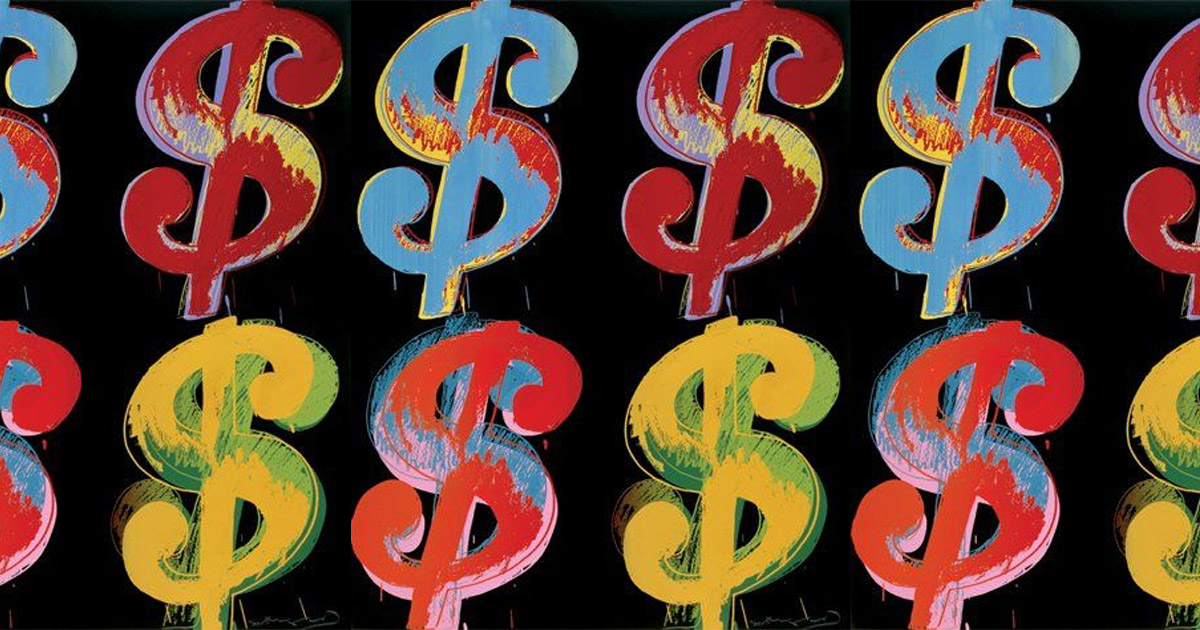 Decades after Andy Warhol’s untimely death in 1987, his apotheosis in the art market is as evident as ever. How could this be? This has much to do with Warhol’s prominent role in the foundation of pop art, and how it has had an effect on society today. Andy Warhol revolutionized the art world with his unique approach at creating art off of the fundamental of it existing as a commodity. This 1960’s pop art movement was centered around the awareness of everyday objects, consumerism, and mass media; a concept that has continued on to be increasingly relevant in modern times. He is known for his substantial portraits of Marilyn Monroe, Prince, Muhammad Ali, in addition to his representations of everyday objects such as Campbell soup cans and Brillo boxes. All of his images are easily recognizable, creating a style that is palatable for people of all generations. There is a strong sense of realism and rawness in the body of work created throughout his life as he was known to also reappropriate images taken from world news and events current to his lifetime such as scenes of electric chairs, riots, and world leaders. Many of these iconographies remain recognizable on a household basis to this day. Beyond the subject matter, the repetitive style in which he portrayed his subjects alludes to the theme of mass production and oversaturation in consumerist culture that became initially became popularized in the 1960’s. Through this Andy Warhol was able to expose the emptiness and decadence in this culture, allowing him to remain relevant in the art market. This principle translates directly into contemporary times, as many people are becoming aware of the implications this has placed on society over the last few decades.
Decades after Andy Warhol’s untimely death in 1987, his apotheosis in the art market is as evident as ever. How could this be? This has much to do with Warhol’s prominent role in the foundation of pop art, and how it has had an effect on society today. Andy Warhol revolutionized the art world with his unique approach at creating art off of the fundamental of it existing as a commodity. This 1960’s pop art movement was centered around the awareness of everyday objects, consumerism, and mass media; a concept that has continued on to be increasingly relevant in modern times. He is known for his substantial portraits of Marilyn Monroe, Prince, Muhammad Ali, in addition to his representations of everyday objects such as Campbell soup cans and Brillo boxes. All of his images are easily recognizable, creating a style that is palatable for people of all generations. There is a strong sense of realism and rawness in the body of work created throughout his life as he was known to also reappropriate images taken from world news and events current to his lifetime such as scenes of electric chairs, riots, and world leaders. Many of these iconographies remain recognizable on a household basis to this day. Beyond the subject matter, the repetitive style in which he portrayed his subjects alludes to the theme of mass production and oversaturation in consumerist culture that became initially became popularized in the 1960’s. Through this Andy Warhol was able to expose the emptiness and decadence in this culture, allowing him to remain relevant in the art market. This principle translates directly into contemporary times, as many people are becoming aware of the implications this has placed on society over the last few decades.
Beyond Warhol’s social criticism that resonates with so many, there are a few other reasons why his works are dominating the art market. From an economic standpoint, considering the abundance of works that amass to create Warhol’s prolific oeuvre, it would be difficult to imagine why many of his pieces are becoming increasingly collectable and valuable as time goes on. In terms of the market for art, this contradiction of supply and demand is the right recipe to sky rocket sale prices. His massive portfolio provides a stable influx of paintings, prints, and objects that create a confidence amongst collector and market. In addition to this, there is a considerable amount of individuals who invest themselves in buying Warhol’s whenever the market for his work experiences a drop, in an attempt to preserve the value of their own collections. Although for the most part, it is known to stay generally consistent. Warhol is often regarded as the ‘One-Man Market’ by art collectors and art market experts alike. In 2017 alone his total sales at auction were an estimated 286 million USD, making up 4.4% of the total sales of the Post-War and Contemporary works at auction that year. The average selling price for each object at auctions in 2017 was 1.6 million USD. Since then, the market for Warhols has only increased due to mega exposure from blue-chip galleries and auction galleries. Investing in Warhol has become recession-proof at this point due to its relevant visual language, resounding social commentary, and economic stability. One looking to collect art with intentions to invest should highly consider this opportunity.






